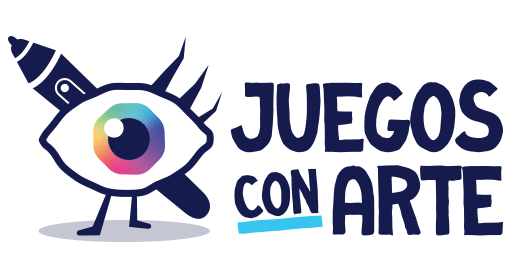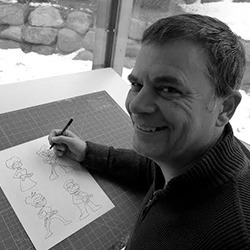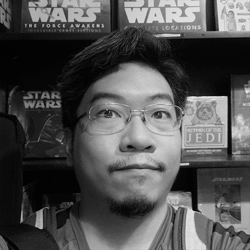
¡Hola a tod@s! En el día de hoy entrevistamos al gran ilustrador JB Casacop, ilustrador freelance de juegos de mesa. Seguramente has podido admirar el arte de JB mientras jugabas a Star Wars: Legion, El Señor de los Anillos LCG, Arkham Horror, Star Wars: X-Wing…
Os dejo que disfrutéis de su impresionante trabajo y experiencia en el sector.
ENG | Welcome JB Casacop, in case there are still some of our readers who don’t know your great work, can you introduce yourself to our community and tell us about your beginnings in the world of illustration?
Hello there! Thanks for having me here!
My name is JB Casacop and I am a professional illustrator with more than a decade of experience making art for video games and hobby games. I started out as a concept artist for a local studio. That’s where I learned the basics of digital painting of which I knew very little back then. Before I landed that gig, I only knew how to draw on paper and color my pieces comic book style. My colleagues were kind enough to share with me their techniques. Then I bought many issues of ImagineFX and Advanced Photoshop.
For many years, I tried several tools and techniques until I came up with a style that worked well for me. Then I started posting a lot of my work online until one day, I received my first direct commission inquiry. A few years after that, I decided to transition to freelance full-time.
ESP | Bienvenido JB Casacop, por si todavía hay alguno de nuestros lectores que no conozca tu gran trabajo, ¿puedes presentarte a nuestra comunidad y contarnos tus inicios en el mundo de la ilustración?
Hola a todos. ¡Gracias por invitarme!
Mi nombre es JB Casacop y soy un ilustrador profesional con más de una década de experiencia haciendo arte para videojuegos y juegos de mesa. Empecé como artista conceptual para un estudio local. Allí es donde aprendí los fundamentos de la pintura digital, de la que sabía muy poco por aquel entonces. Antes de conseguir ese trabajo, sólo sabía dibujar en papel y colorear mis piezas al estilo de los cómics. Mis colegas tuvieron la amabilidad de compartir conmigo sus técnicas. Luego compré muchos números de ImagineFX y de Photoshop avanzado.
Durante muchos años, probé varias herramientas y técnicas hasta que di con un estilo que me funcionaba bien. Entonces empecé a publicar muchos de mis trabajos en Internet hasta que un día recibí mi primer encargo directo. Unos años más tarde, decidí pasar a trabajar por cuenta propia a tiempo completo.
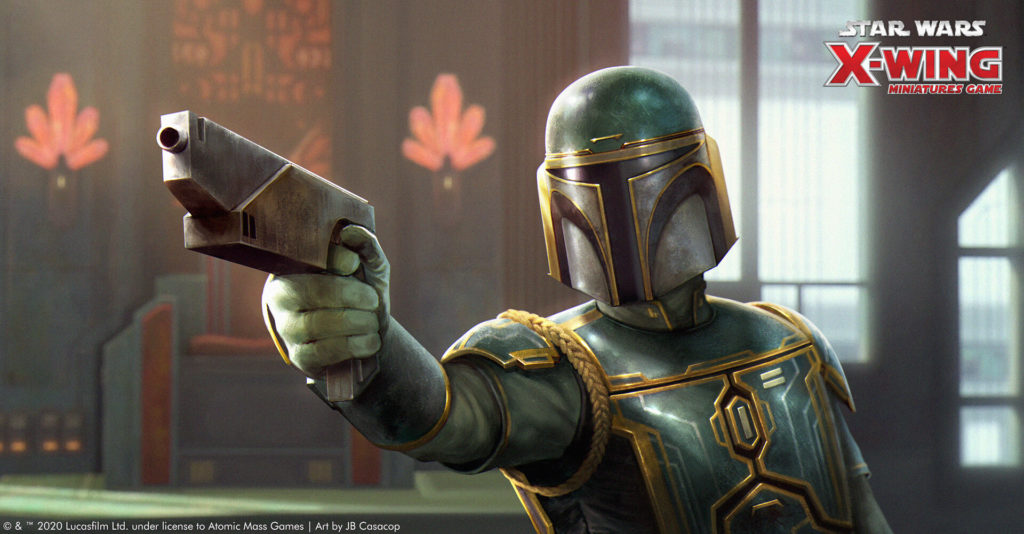
ENG | How did you first get involved in the illustration of a board game and what did you learn from that project?
The first tabletop game that I was lucky enough to have worked on was Warhammer: Invasion. I was commissioned by Fantasy Flight Games to work on a couple of cards that featured orcs. The first thing that I learned through that experience is the difference between in-house work and individually commissioned work. When you’re working for a studio, you have the manager to take care of tracking your progress and coordinating with the client. When you’re doing a commission, you’re responsible for those things as well. In terms of art, I learned how to pay greater attention to the briefing and to be more observant of a project’s specific style requirements. The anatomy of orcs in Warhammer is more exaggerated than I’m used to so there was a learning curve. Luckily, my painterly rendering style is a good fit for that project so once I was able to get my sketches approved, the rest of the job got easier.
ESP | ¿Cómo se involucró por primera vez en la ilustración de un juego de mesa y qué aprendió de ese proyecto?
El primer juego de mesa en el que tuve la suerte de trabajar fue Warhammer: Invasion. Fantasy Flight Games me encargó un par de cartas con orcos. Lo primero que aprendí con esa experiencia es la diferencia entre el trabajo interno y el trabajo por encargo. Cuando trabajas para un estudio, el director se encarga de seguir tu progreso y de coordinar con el cliente. Cuando haces un encargo, también eres responsable de esas cosas. En cuanto al arte, aprendí a prestar más atención al briefing y a ser más observador de los requisitos de estilo específicos de un proyecto. La anatomía de los orcos en Warhammer es más exagerada de lo que estoy acostumbrado, así que hubo una curva de aprendizaje. Por suerte, mi estilo de representación pictórica encaja bien en ese proyecto, así que una vez que conseguí que aprobaran mis bocetos, el resto del trabajo fue más fácil.

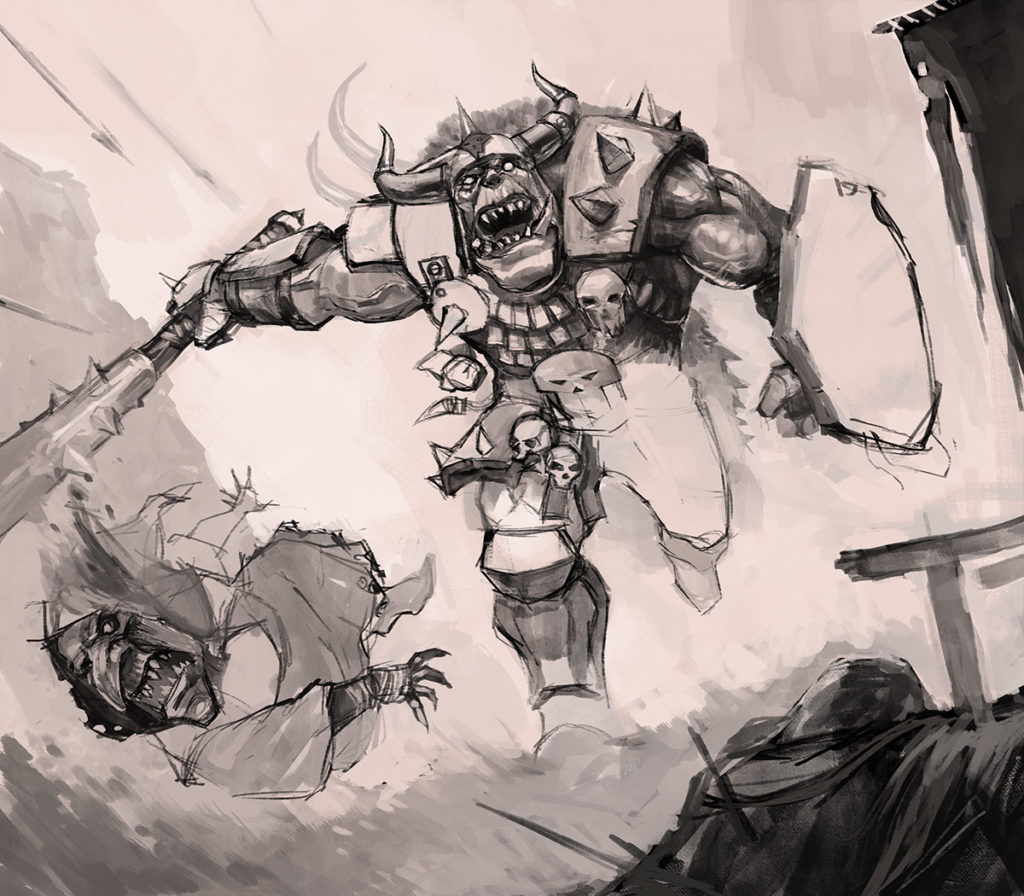
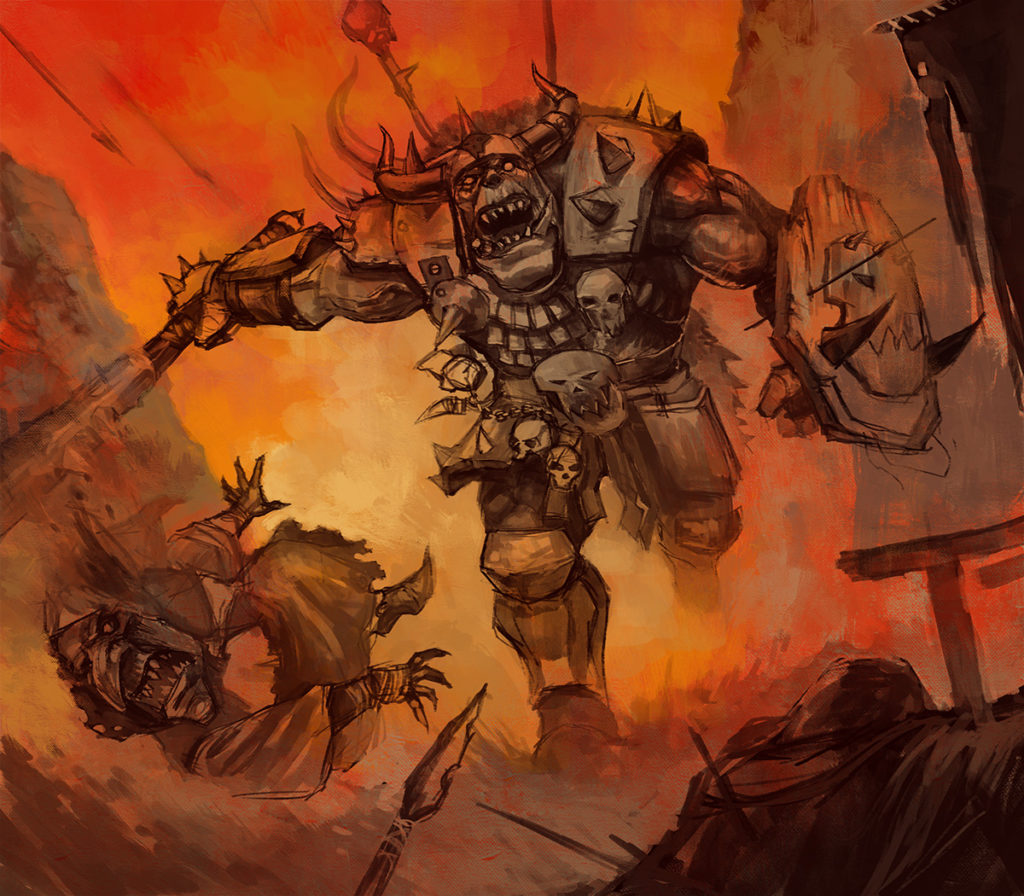

ENG | What is your creative process like when working on a board game? Tell us about that process, from the emergence of the first idea or purpose to the final artwork.
It starts with the art brief. The client gives a detailed description of the illustration that I need to produce. From there, I come up with a checklist that looks like the following.
- What’s the setting?
- How many characters (if applicable) should be seen?
- What’s the best arrangement of visual elements within the given dimensions?
- Is the artwork compliant with the required art style? (check colors and render finish)
Creating a checklist like that makes it easier for me to objectively define the parameters of the job. I then generate two or three rough sketches based on my answers to those questions and develop the one that gets picked by the client. That’s pretty much the process that I follow for all projects. The only thing that changes is the overall finish because that depends entirely on the design languages of each project.
ESP | ¿Cómo es su proceso creativo cuando trabaja en un juego de mesa? Háblenos de ese proceso, desde la aparición de la primera idea o propósito hasta la obra de arte final.
Comienza con el briefing artístico. El cliente me da una descripción detallada de la ilustración que tengo que realizar. A partir de ahí, elaboro una lista de comprobación similar a la siguiente.
- ¿Cuál es el escenario?
- ¿Cuántos personajes (si es el caso) deben verse?
- ¿Cuál es la mejor disposición de los elementos visuales dentro de las dimensiones dadas?
- ¿Cumple la obra de arte con el estilo artístico requerido? (comprueba los colores y el acabado del renderizado)
La creación de una lista de control de este tipo me facilita la definición objetiva de los parámetros del trabajo. A continuación, elaboro dos o tres bocetos basados en mis respuestas a esas preguntas y desarrollo el que elige el cliente. Ese es más o menos el proceso que sigo para todos los proyectos. Lo único que cambia es el acabado general, porque eso depende totalmente de los lenguajes de diseño de cada proyecto.
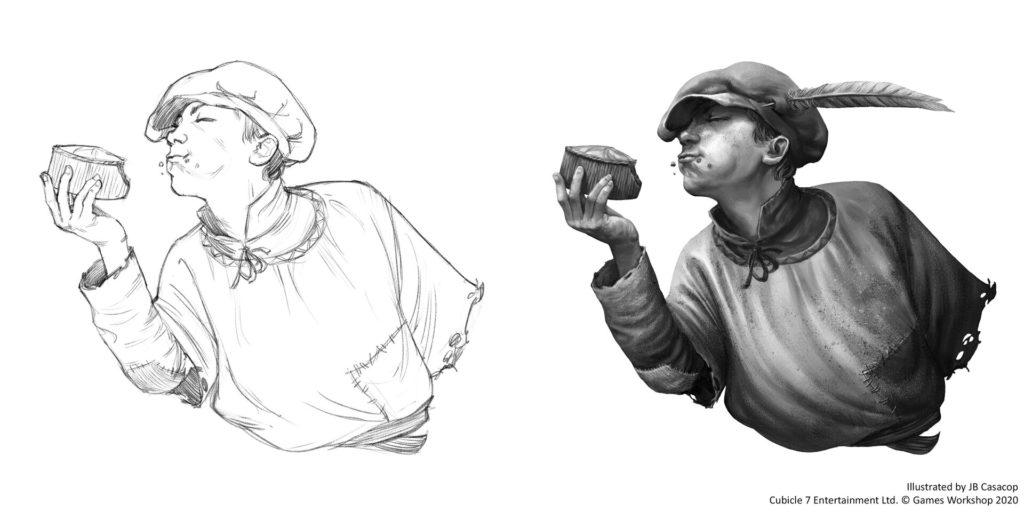
ENG | You have worked for The Lord of the Rings LCG and even for its expansion The Darkness of the Black Forest, where we can see your work on the cover, representing Stalking Goblin. How was the creation process for this card?
For the Stalking Goblin, I didn’t know that it was going to be used as a cover artwork. When I composed the scene, I did so with the provided card template in mind. Luckily for me, I placed the goblin well enough within the frame that it also worked for the cover. I made sure there was sufficient detail so that we could still see the character’s face even though he’s hiding in the shadows of the Mirkwood forest. The creation process is pretty much the same. I sent the art director two sketches. He chose the one that he thought best represented the briefing and we just fleshed out the entire illustration from there.
ESP | Has trabajado para The Lord of the Rings LCG e incluso para su expansión The Darkness of the Black Forest, donde podemos ver tu trabajo en la portada, representando a Stalking Goblin. ¿Cómo fue el proceso de creación de esta carta?
En el caso del Stalking Goblin, no sabía que se iba a utilizar como ilustración de la portada. Cuando compuse la escena, lo hice pensando en la plantilla de la carta que se me proporcionó. Por suerte, coloqué al duende lo suficientemente bien dentro del marco como para que también sirviera para la portada. Me aseguré de que hubiera suficiente detalle para que pudiéramos seguir viendo la cara del personaje a pesar de estar escondido en las sombras del bosque de Mirkwood. El proceso de creación es prácticamente el mismo. Envié al director artístico dos bocetos. Él eligió el que creía que representaba mejor el briefing y, a partir de ahí, dimos cuerpo a toda la ilustración.
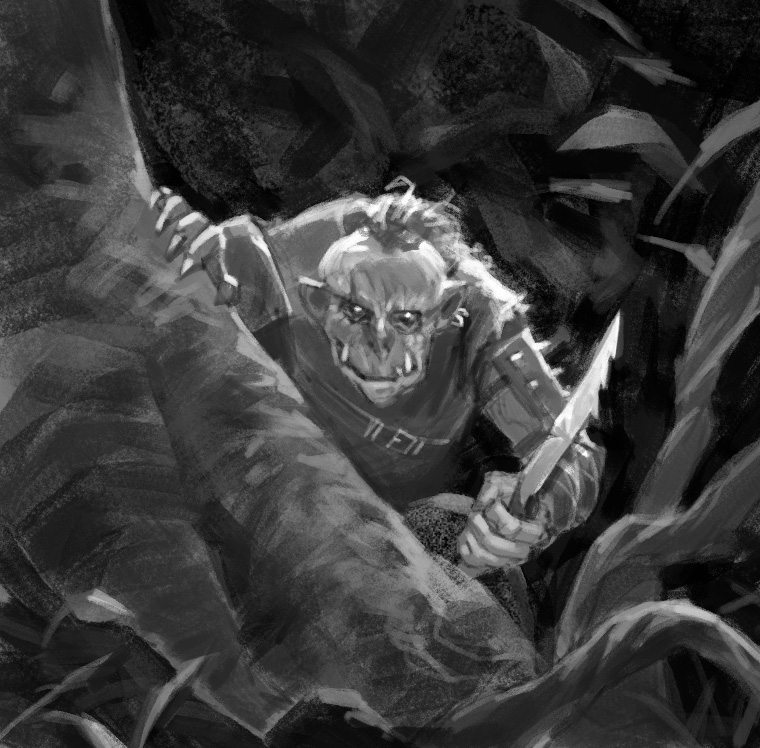

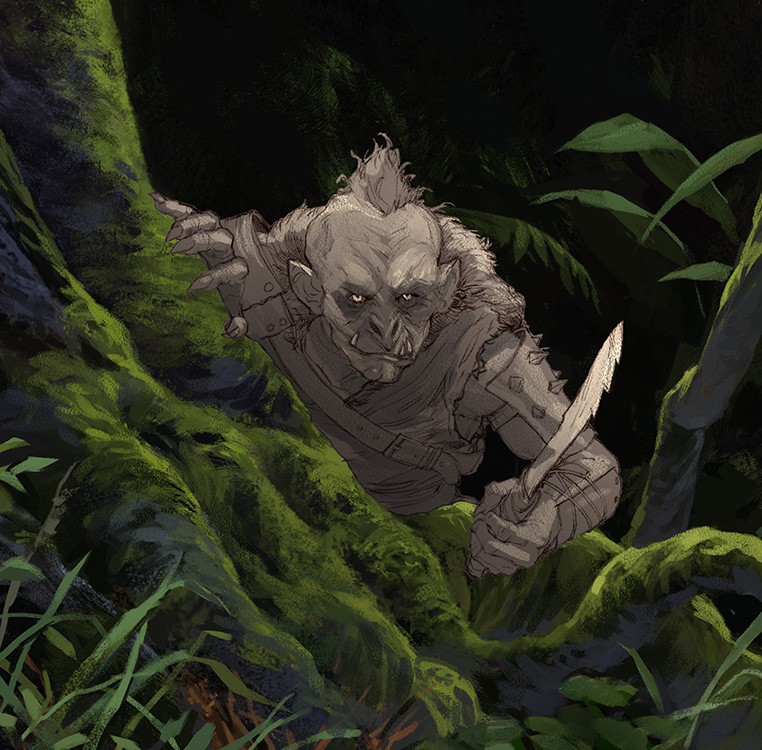

ENG | How does it work to illustrate a Fantasy Flight Games LCG game, where a large number of artists are involved in a single project?
It’s a great experience to be part of any project that’s being published by Fantasy Flight Games. The art directors at FFG are very friendly and are very systematic with their approach on handling large groups of artists for multiple projects. They always make sure we are provided with all the reference materials we need. They always reply in a timely manner and when they give feedback, it’s not just text feedback. They also give us visual notes so that all adjustments we need to do are very well articulated. It’s always a great pleasure to see my work together with those of very accomplished and internationally recognized illustrators. It inspires me to continue honing my craft.
ESP | ¿Cómo funciona la ilustración de un juego LCG de Fantasy Flight Games, en el que participan un gran número de artistas en un mismo proyecto?
Es una gran experiencia formar parte de cualquier proyecto publicado por Fantasy Flight Games. Los directores de arte de FFG son muy amables y son muy sistemáticos con su enfoque sobre el manejo de grandes grupos de artistas para múltiples proyectos. Siempre se aseguran de proporcionarnos todo el material de referencia que necesitamos. Siempre responden de manera oportuna y, cuando dan su opinión, no se trata sólo de un comentario de texto. También nos dan notas visuales para que todos los ajustes que tengamos que hacer estén muy bien articulados. Siempre es un gran placer ver mi trabajo junto al de ilustradores muy consumados y reconocidos internacionalmente. Me inspira a seguir perfeccionando mi oficio.
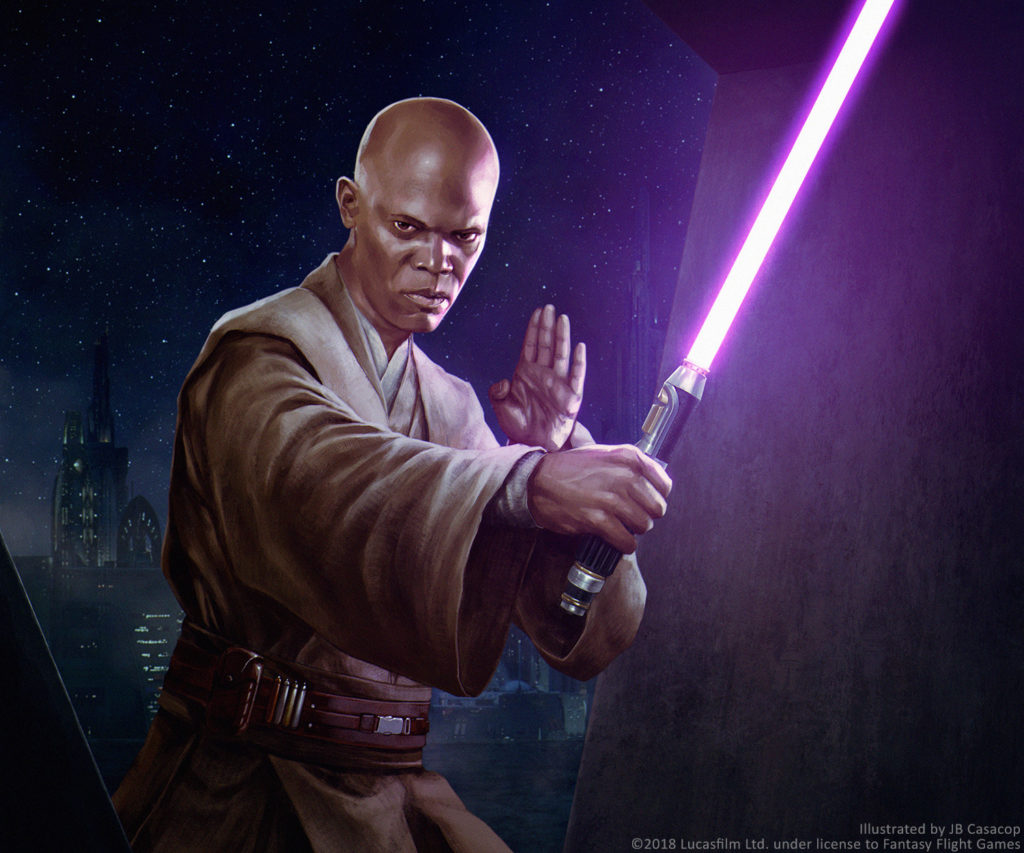
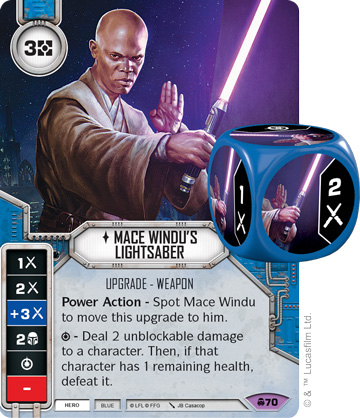
ENG | One of your last illustrated board games has been the hidden role game Unfathomable. What challenges or peculiarities did you face during its creation?
The biggest challenge that I faced when I illustrated for Unfathomable is making sure my work is thematically compliant. The setting for the game is some time around the 1920s if I remember correctly. I know very little about what fashion, architecture, and ship interiors looked like in the US during that period so I had to do more research than usual.
ESP | Uno de tus últimos juegos de mesa ilustrados ha sido el juego de roles ocultos Unfathomable. ¿A qué retos o peculiaridades te enfrentaste durante su creación?
El mayor reto al que me enfrenté cuando ilustré Unfathomable es asegurarme de que mi trabajo se ajusta a la temática. La ambientación del juego se sitúa en torno a los años 20, si no recuerdo mal. Sé muy poco sobre cómo era la moda, la arquitectura y los interiores de los barcos en Estados Unidos durante esa época, así que tuve que investigar más de lo habitual.
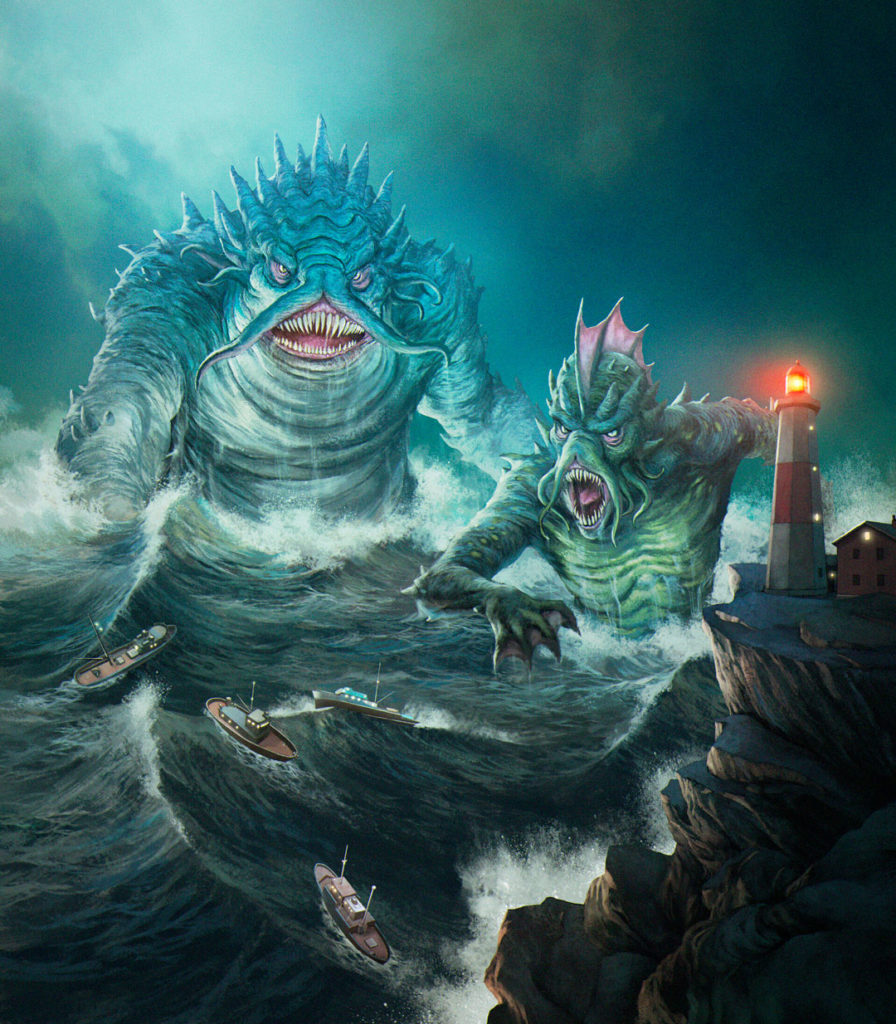
ENG | In your portfolio we can see in detail the process of creating the angel Avacyn for the mythical card game Magic: The Gathering, why has it become one of your favourite illustrations?
Magic: The Gathering is one of the games that made me decide to become an illustrator. I was eleven when I first saw some MTG cards. Since then, I never stopped dreaming of seeing my name and my art on actual Magic cards. This illustration of Avacyn brought me closer to realizing that dream. At least that’s what I believe. I made this for the MTG tribute exhibit hosted by the Light Grey Art Lab in Minneapolis Minnesota many years ago. It’s not an official MTG event but something in me said I needed to be part of it. It was an opportunity to show people abroad that I could make Magic art and that I’m very passionate about it. That passion is what this painting of Avacyn represents. I really poured my heart into it.
ESP | En tu portafolio podemos ver con detalle el proceso de creación del ángel Avacyn para el mítico juego de cartas Magic: The Gathering, ¿por qué se ha convertido en una de tus ilustraciones favoritas?
Magic: The Gathering es uno de los juegos que me hizo decidirme a ser ilustrador. Tenía once años cuando vi por primera vez unas cartas de MTG. Desde entonces, nunca dejé de soñar con ver mi nombre y mi arte en cartas reales de Magic. Esta ilustración de Avacyn me acercó a la realización de ese sueño. Al menos eso es lo que creo. La hice para la exposición de homenaje a MTG que organizó el Light Grey Art Lab en Minneapolis, Minnesota, hace muchos años. No es un evento oficial de MTG, pero algo en mí me decía que tenía que formar parte de él. Era una oportunidad para mostrar a la gente de fuera que podía hacer arte de Magic y que me apasiona. Esa pasión es lo que representa este cuadro de Avacyn. He puesto todo mi corazón en él.

ENG | You have illustrated many cards for great fantasy and science fiction games such as Star Wars: Legion, Star Wars: X-Wing, Call of Cthulhu, KeyForge… What’s your trick to keep finding inspiration to create amazing scenes and compositions?
I’m really into popular culture. I’m a huge fan of Star Wars. I never get tired of watching all episodes including the sequel trilogy. Sometimes, I even use them as background noise while working. I also read a lot of comic books of different genres like horror and speculative fiction. I play a lot of open world video games from the Assassin’s Creed and The Witcher franchises. All of these things provide me with an endless supply of inspiration for the compositions that I make.
ESP | Has ilustrado muchas cartas para grandes juegos de fantasía y ciencia ficción como Star Wars: Legion, Star Wars: X-Wing, Call of Cthulhu, KeyForge… ¿Cuál es tu truco para seguir encontrando inspiración para crear escenas y composiciones increíbles?
Me gusta mucho la cultura popular. Soy un gran fan de Star Wars. Nunca me canso de ver todos los episodios, incluida la trilogía de las secuelas. A veces, incluso los utilizo como ruido de fondo mientras trabajo. También leo muchos cómics de diferentes géneros como el terror y la ficción especulativa. Juego mucho a videojuegos de mundo abierto de las franquicias Assassin’s Creed y The Witcher. Todas estas cosas me proporcionan un suministro inagotable de inspiración para las composiciones que hago.
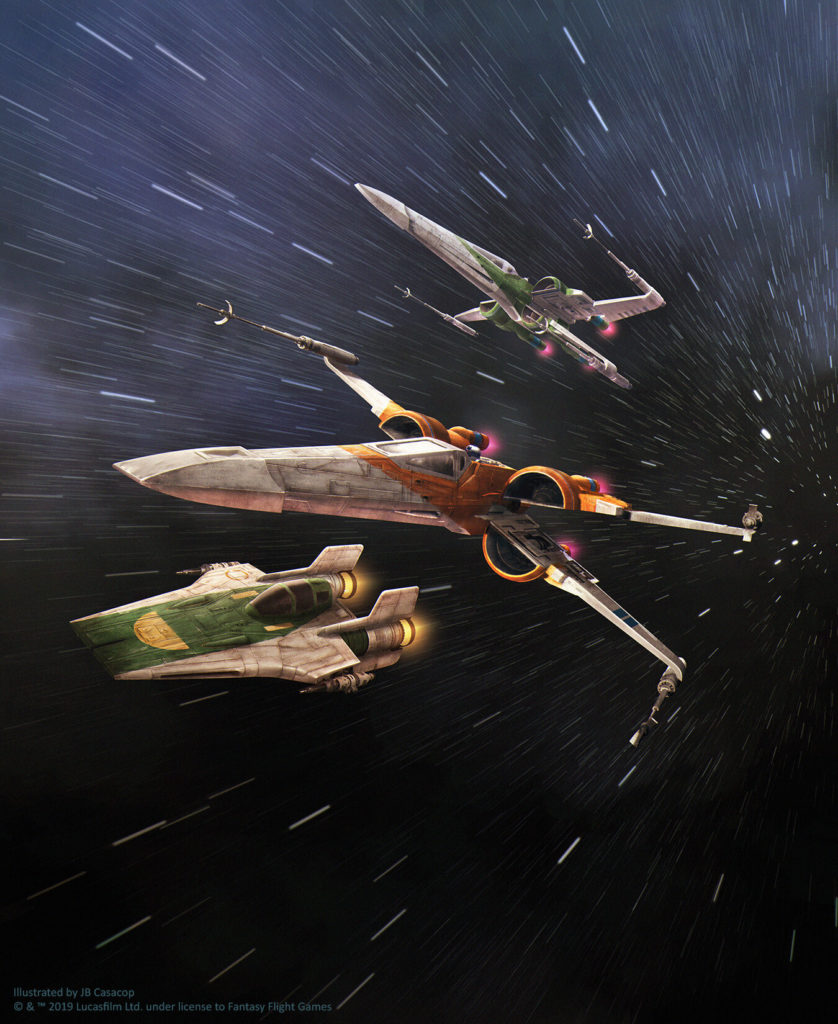
ENG | What requirements do you think are necessary to be a good illustrator?
The first and most important requirement to be a good illustrator is to pay attention to fundamentals. It’s also vital to keep in mind that art fundamentals are not something you master in one sitting. You must make them part of your practice. You must review such things from time to time. I personally keep tutorials, art books, and references within reach every time so I can keep sharpening my skills when I have time to spare. It’s also good to build your own mental visual library by getting into other things that aren’t necessarily illustration related. For example, I’m into martial arts too. I study muay thai, kali, and longsword fencing and I believe those activities enrich my ability to create more convincing action scenes. In other words, a huge part of being an illustrator is making effective visual interpretations of the things you perceive and experience.
ESP | ¿Qué requisitos crees que son necesarios para ser un buen ilustrador?
El primer y más importante requisito para ser un buen ilustrador es prestar atención a los fundamentos. También es vital tener en cuenta que los fundamentos del arte no son algo que se domine de una sola vez. Debes convertirlos en parte de tu práctica. Debes repasarlos de vez en cuando. Personalmente, mantengo tutoriales, libros de arte y referencias al alcance de la mano en todo momento para poder seguir afinando mis habilidades cuando tengo tiempo libre. También es bueno construir tu propia biblioteca visual mental metiéndote en otras cosas que no están necesariamente relacionadas con la ilustración. Por ejemplo, a mí también me gustan las artes marciales. Estudio muay thai, kali y esgrima con espada larga y creo que esas actividades enriquecen mi capacidad para crear escenas de acción más convincentes. En otras palabras, una gran parte de ser ilustrador es hacer interpretaciones visuales eficaces de las cosas que percibes y experimentas.
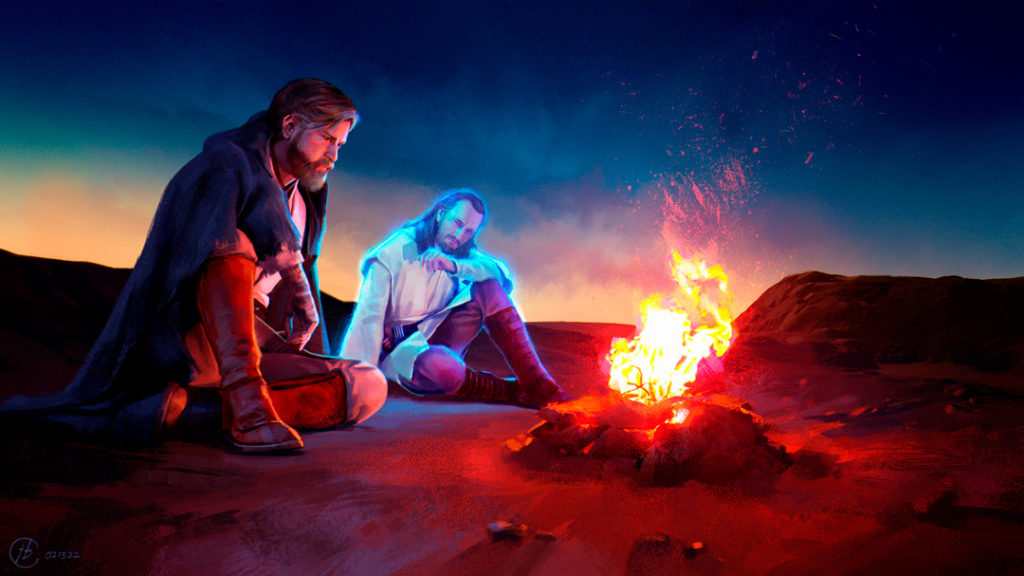
ENG | Finally, what projects are you currently working on?
It brings me great joy to tell you that I’m currently working on Magic: The Gathering. I started last year. I wish I could tell you more about it but the sets I’m part of are still under NDA so it will be a while before I’m allowed to show the work that I’ve been doing for Wizards of the Coast. I’m so excited nonetheless! Then there’s Arkham Horror and Star Wars: Legion for Fantasy Flight Games and Atomic Mass Games respectively.
I’ve also made some illustrations for the tabletop RPG Homeworld: Revelations by Modiphius Entertainment. I think that’s going to be released very soon.
ESP | Por último, ¿en qué proyectos está trabajando actualmente?
Me alegra mucho decirte que actualmente estoy trabajando en Magic: The Gathering. Empecé el año pasado. Me gustaría poder contarte más sobre ello, pero los sets en los que participo aún están bajo NDA, así que pasará un tiempo antes de que me permitan mostrar el trabajo que he estado haciendo para Wizards of the Coast. No obstante, ¡estoy muy emocionada! Luego están Arkham Horror y Star Wars: Legion para Fantasy Flight Games y Atomic Mass Games respectivamente.
También he hecho algunas ilustraciones para el juego de rol de mesa Homeworld: Revelations de Modiphius Entertainment. Creo que saldrá a la venta muy pronto.
Muchas gracias JB 😉
(Todas las imágenes cedidas por JB Casacop)

